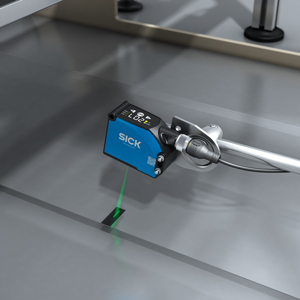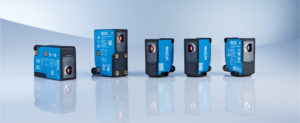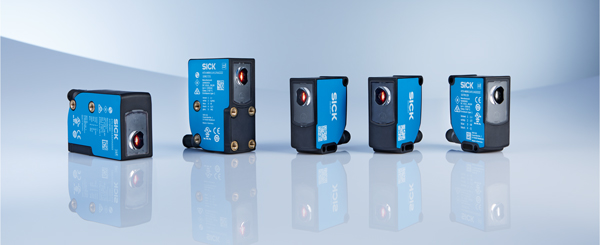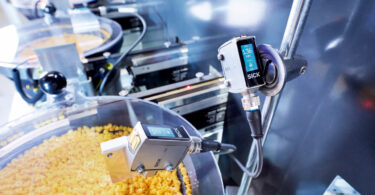 Though registration marks on sheets of labels, diapers, paper, etc. are often small in size, they are crucial to the manufacturing process because they control applications where proper alignment is vital like cutting, printing, positioning, counting, etc. Being able to detect these marks is paramount and often becomes a joint effort between marketing and factory operations: the mark must not get “lost” within the design of the label or package; the production equipment needs to detect that mark reliably regardless of material speed or “flutter.”
Though registration marks on sheets of labels, diapers, paper, etc. are often small in size, they are crucial to the manufacturing process because they control applications where proper alignment is vital like cutting, printing, positioning, counting, etc. Being able to detect these marks is paramount and often becomes a joint effort between marketing and factory operations: the mark must not get “lost” within the design of the label or package; the production equipment needs to detect that mark reliably regardless of material speed or “flutter.”
Normally material speed is not an issue. Many of today’s better registration mark sensors have response speeds measured in microseconds (for reference there are 1000 microseconds in 1 millisecond and 1000 milliseconds in 1 second). So they have no problem keeping up with webs of material moving several yards per second with registration mark speeds up to 50 kHz.
Challenges
The way most contrast sensors operate is by detecting the contrast difference between the mark and the background on which it is printed. Typically this ends up being a darker mark on a lighter background and the sensor can detect this without troubles.
- What happens if the background changes? The registration mark itself remains the same in luster and hue, but the background changes from white to gray?
- What if the package design changed to include a darker stripe that happens to fall under the sensor while the web is running, giving you false trips?
- What if the label itself is clear?
Occurrences like these are where using a color sensor would yield better results because you could teach the sensor the color of the mark itself, sending the signal when it sees the color and not the transition from background to mark. So why not use a color sensor exclusively? Typically color sensors have much slower response speeds so often times they can’t keep up with the process. Plus, they usually cost a lot more than a standard contrast sensor so they can become cost prohibitive to use in every application.
Solution – Color and Contrast Combined
SICK does a good job in solving this issue by combining a contrast sensor and a color sensor into a single device: the KTS/X Prime.
 In “2-point” teach mode the registration mark is taught, then the background is taught creating that transition that is needed for a contrast sensor to operate. Switching the sensor over to “1-point” teach mode puts it into a color-only mode, allowing the mark to be taught by itself without having to also teach in the background. This way the sensor only responds to the color that was taught, ignoring the background regardless of tint or luster. This works especially well if the background is clear!
In “2-point” teach mode the registration mark is taught, then the background is taught creating that transition that is needed for a contrast sensor to operate. Switching the sensor over to “1-point” teach mode puts it into a color-only mode, allowing the mark to be taught by itself without having to also teach in the background. This way the sensor only responds to the color that was taught, ignoring the background regardless of tint or luster. This works especially well if the background is clear!
With a response time of 32 microseconds in color mode, the KTS/X Prime can keep up with most operational processes. The KTS/X Prime is also priced at the same level as many other contrast sensors, which is typically almost half of what a true color sensor sells for!
To learn more, contact Bryan Sellars at bryan.sellars@sick.com or visit sickusa.com.
[custom_author=BryanSellars]






